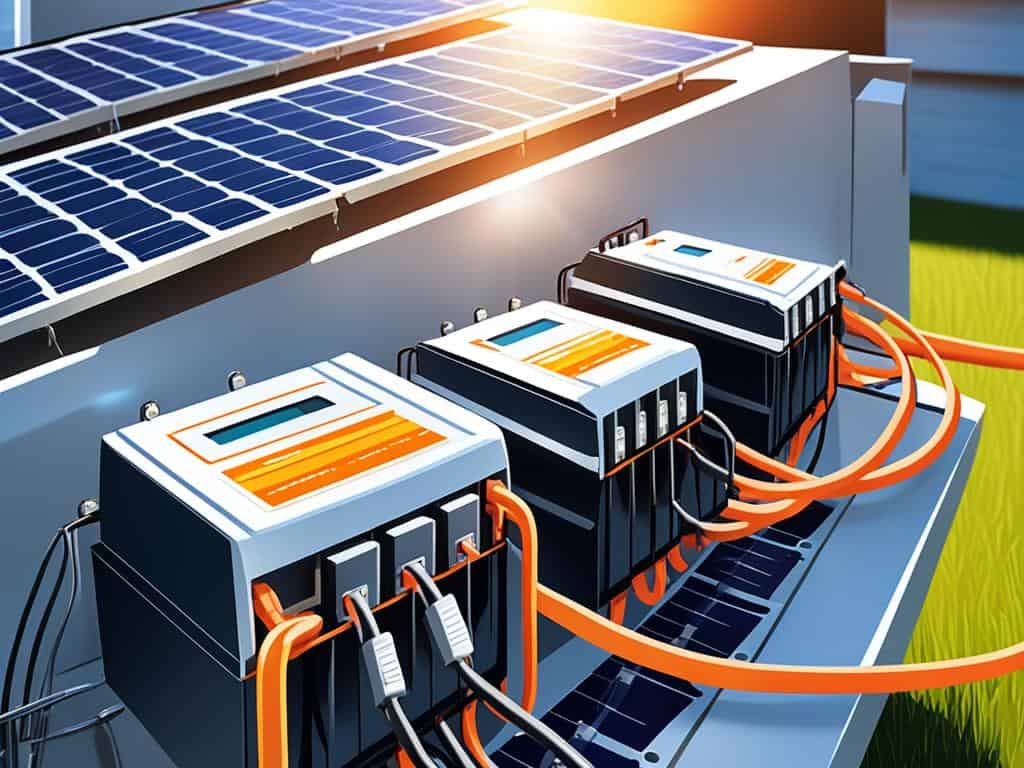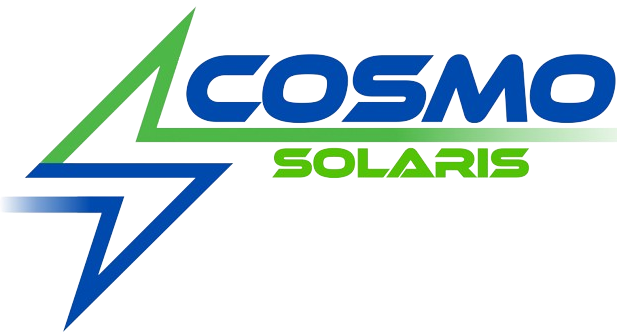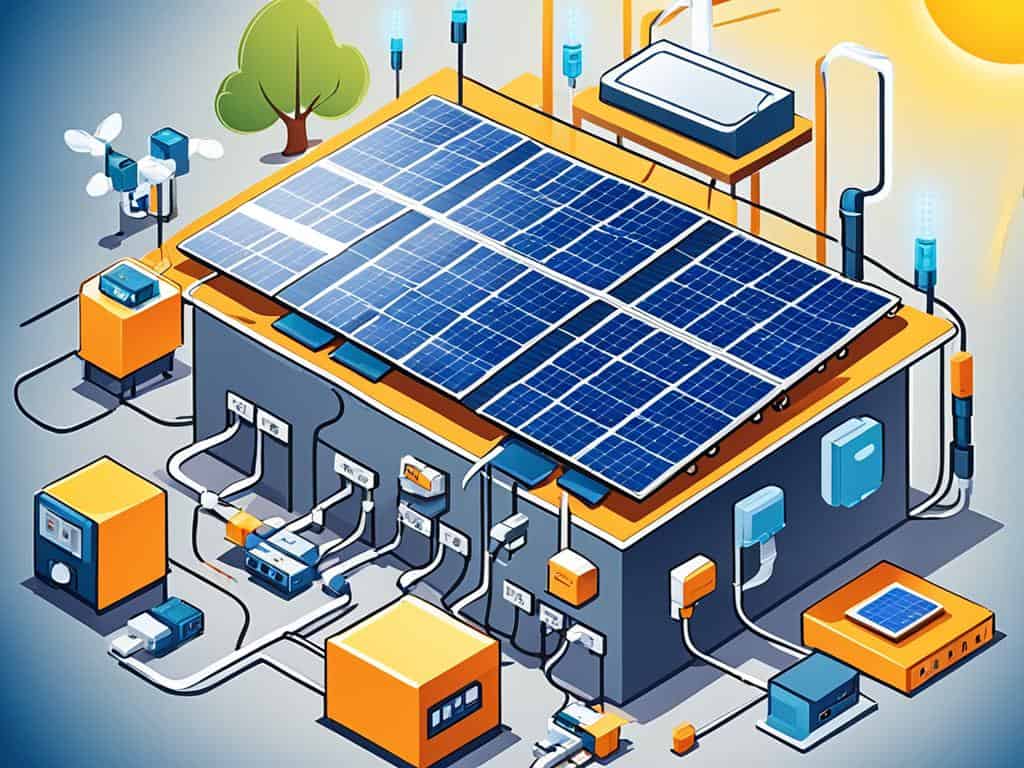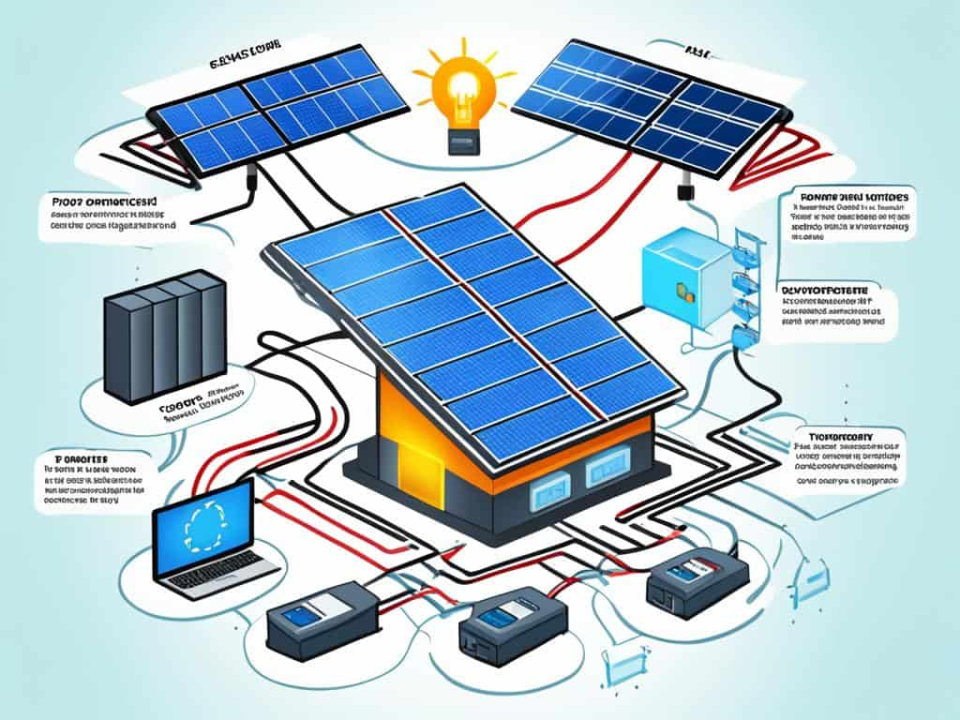Understanding Solar System Parts for Homes and Businesses

Welcome to Cosmo Solaris, your guide to understanding solar energy! Have you ever wondered how we can use the sun to power homes and businesses? Let’s explore the key parts of a solar system in an easy way.
What is a Solar System?
A solar system for homes and businesses is a setup that uses sunlight to generate electricity. This system allows people to use clean and renewable energy instead of relying on traditional electricity, which often comes from burning fossil fuels. A solar system consists of several important parts that work together to convert sunlight into usable energy.
Main Parts of a Solar System
1. Solar Panels – The Sunlight Catchers
Solar panels are the most important part of a solar system. They sit on rooftops or open areas and capture sunlight. These panels are made of special materials called photovoltaic (PV) cells that turn sunlight into electricity. The more sunlight a panel absorbs, the more electricity it can generate.
There are different types of solar panels:
- Monocrystalline Panels: These are highly efficient and last a long time.
- Polycrystalline Panels: These are slightly less efficient but more affordable.
- Thin-Film Panels: These are lightweight and flexible but may require more space.
2. Inverter – The Power Changer

The electricity from solar panels is called DC (Direct Current), but homes and businesses use AC (Alternating Current). The inverter changes DC into AC so that we can use it to power lights, fans, and other devices. Without an inverter, solar energy would not be usable in most appliances.
Types of inverters include:
- String Inverters: Connect multiple panels in a series.
- Microinverters: Attached to each panel for better efficiency.
- Hybrid Inverters: Work with battery storage systems.
3. Battery – The Energy Saver
Not all solar systems have batteries, but they help store extra energy. This energy can be used at night or on cloudy days when there is less sunlight. Batteries are especially useful in places where power outages are common.
Some types of solar batteries are:
- Lead-Acid Batteries: Affordable but have a shorter lifespan.
- Lithium-Ion Batteries: More expensive but last longer and charge faster.
- Saltwater Batteries: Environmentally friendly and non-toxic.
4. Charge Controller – The Energy Manager
A charge controller protects the battery from overcharging. It regulates the voltage and current coming from the solar panels, ensuring that the battery lasts longer and works efficiently. There are two types of charge controllers:
- PWM (Pulse Width Modulation): More affordable but less efficient.
- MPPT (Maximum Power Point Tracking): More efficient and allows maximum power usage.
5. Electric Meter – The Energy Checker
An electric meter measures how much solar energy is produced and used. If your system makes more energy than you need, it can send extra power back to the electricity grid, allowing you to earn credits or reduce your electricity bill. This process is called net metering.
How Does a Solar System Work?
A solar system works by converting sunlight into electricity. Here’s how the process happens step by step:
- Solar panels absorb sunlight and generate DC electricity.
- The inverter converts DC electricity into AC electricity that can be used in homes and businesses.
- Energy is used immediately, stored in a battery, or sent to the grid.
- During the night or cloudy days, stored energy in the battery is used.
- If connected to the grid, extra energy is sent back and credited to your electricity bill.
Why Use Solar Energy?
Using solar energy has many benefits:
- Saves Money: Solar power reduces electricity bills.
- Eco-Friendly: It helps keep the planet clean by reducing pollution.
- Unlimited Source: The sun provides free energy every day!
- Low Maintenance: Solar systems require minimal maintenance and last for years.
- Energy Independence: Reduces reliance on the main power grid.
Solar Energy in USA
USA has a great potential for solar energy because of its sunny climate. Many people and businesses are switching to solar power due to increasing electricity prices. The government also offers incentives for solar installation, making it more affordable.
Challenges of Solar Energy in USA
Although solar energy is beneficial, there are some challenges in USA:
- High Initial Cost: Buying and installing solar systems can be expensive.
- Lack of Awareness: Many people do not know how solar energy works.
- Weather Dependence: Solar panels generate less energy on cloudy days.
- Storage Limitations: Batteries can be costly and have limited storage capacity.
Despite these challenges, the use of solar energy is growing fast, and more people are adopting it as a reliable energy source.
Steps to Install a Solar System
If you want to install a solar system, follow these steps:
- Assess Your Energy Needs: Check how much electricity you use daily.
- Choose the Right Solar System: Decide between grid-tied, off-grid, or hybrid systems.
- Select a Reliable Installer: Work with a trusted solar provider like CosmoSolaris.
- Install the System: Panels, inverter, and other components are set up.
- Monitor and Maintain: Keep track of energy production and clean panels regularly.
- Take Advantage of Government Incentives: Check for rebates or financial aid for solar installation.
People Also Ask
A solar power system includes solar panels, an inverter, batteries (optional), a charge controller, mounting structures, and electrical wiring. These components work together to convert sunlight into usable electricity for homes and businesses, reducing reliance on the power grid.
Solar panels use photovoltaic (PV) cells to absorb sunlight and convert it into direct current (DC) electricity. This electricity is then sent to an inverter, which converts it into alternating current (AC) power, the type used in homes and businesses.
The inverter is essential for converting the DC electricity produced by solar panels into AC electricity, which is compatible with household and business electrical systems. It also regulates voltage and monitors energy production for optimal system performance and efficiency.
Batteries are optional but beneficial for storing excess solar energy. They provide backup power during outages and ensure electricity availability at night or during cloudy days. Grid-tied systems can operate without batteries by using net metering to balance energy use.
Net metering allows solar panel owners to send excess electricity back to the power grid in exchange for credits. These credits offset future energy usage, reducing electric bills and maximizing the financial benefits of a solar energy system.
A charge controller regulates voltage and current from solar panels to prevent batteries from overcharging or discharging too much. It ensures the battery’s longevity and maintains system efficiency, making it essential for off-grid and hybrid solar installations.
The three main types of solar panels are monocrystalline, polycrystalline, and thin-film. Monocrystalline panels offer the highest efficiency but are expensive, while polycrystalline panels are more affordable. Thin-film panels are lightweight and flexible but have lower efficiency.
The three main types of solar panels are monocrystalline, polycrystalline, and thin-film. Monocrystalline panels offer the highest efficiency but are expensive, while polycrystalline panels are more affordable. Thin-film panels are lightweight and flexible but have lower efficiency.
Mounting and racking systems secure solar panels to roofs or ground installations at the optimal tilt and angle for maximum sunlight absorption. Proper installation enhances efficiency, protects panels from damage, and ensures long-term performance in various weather conditions.
Solar panels typically last 25 to 30 years, while inverters have a lifespan of 10 to 15 years. Batteries vary based on type, with lithium-ion batteries lasting 10 to 15 years and lead-acid batteries lasting 3 to 5 years.
What maintenance is required for a solar power system?
Conclusion
Now you know the basics of a solar system! Understanding how solar energy works can help us save money and protect the environment. Investing in solar power is a smart choice for both homes and businesses. If you want to bring solar energy to your home or business, Cosmo Solaris is here to help. Stay bright with solar power!
We envision a world powered by green energy that empowers every aspect of life, advancing towards environmental harmony and economic growth. We are committed to creating a brighter tomorrow by being part of the renewable energy revolution.
Contact Us
Email Us
info@cosmosolaris.com
Head Office
205 W. Main Street, Abingdon VA 24210, United States
Phone
(757) 644-3466
Subscribe
We’re available 24/7
© 2024 All Rights Reserved – Cosmo Solaris| Designed & Developed by Nextsol



